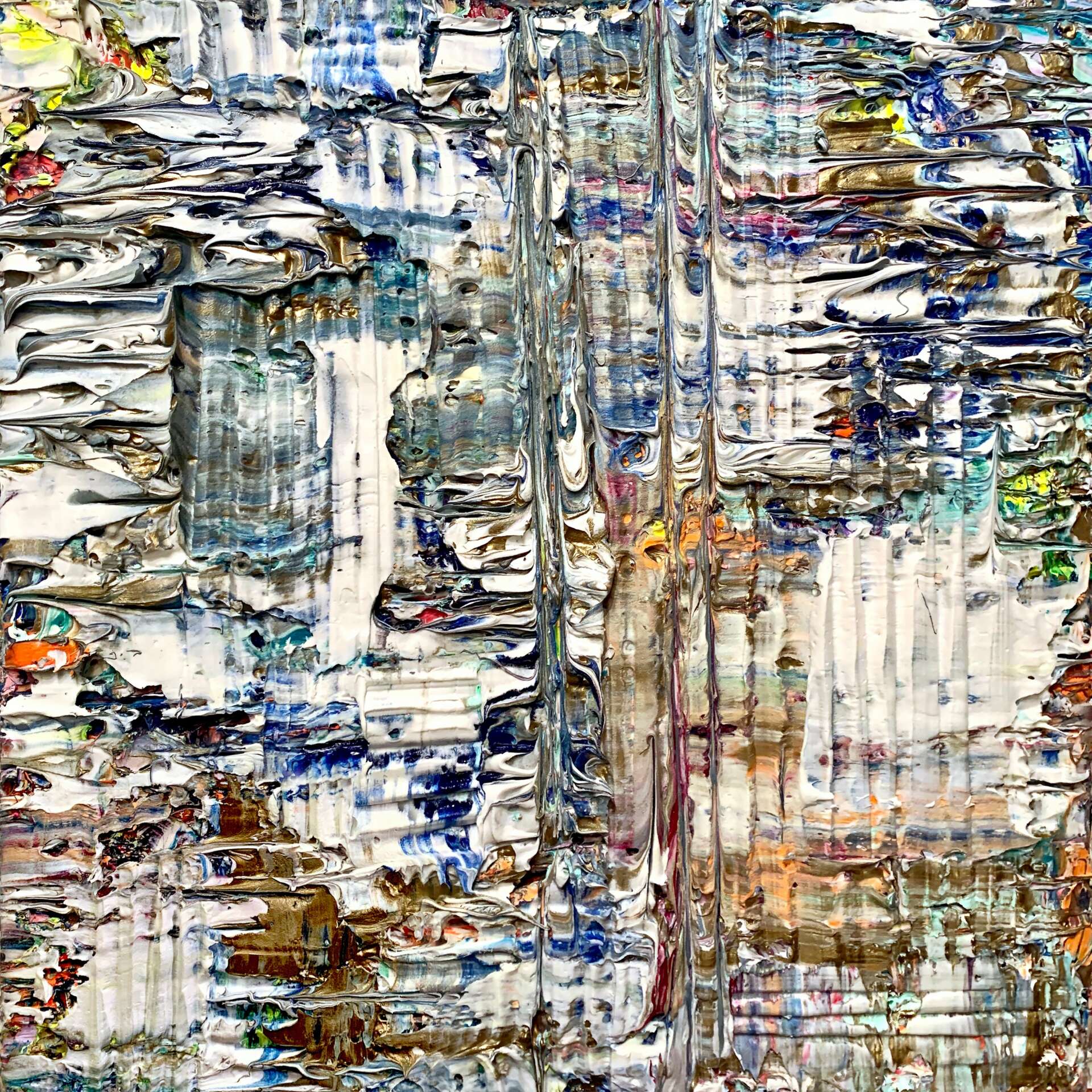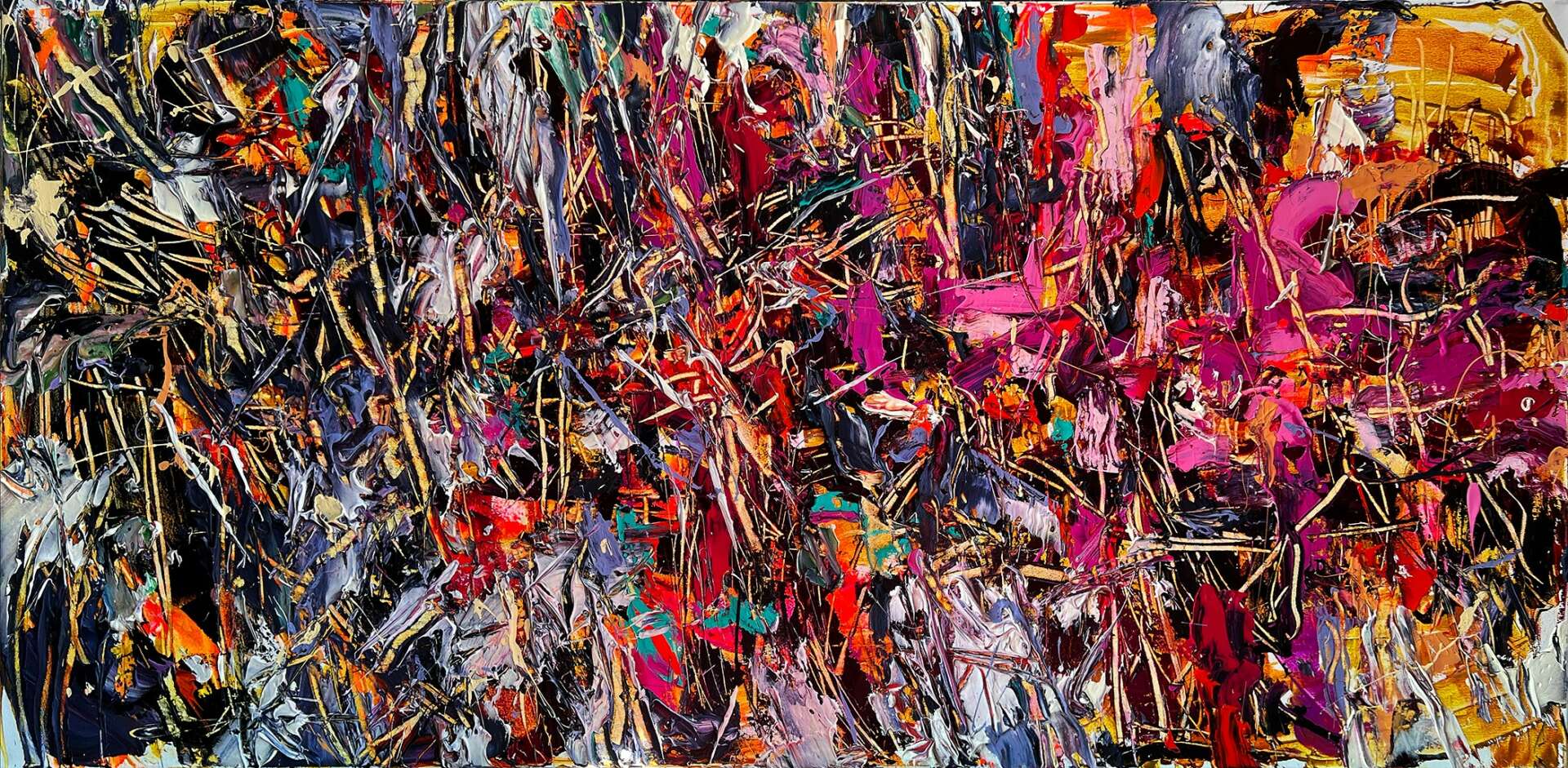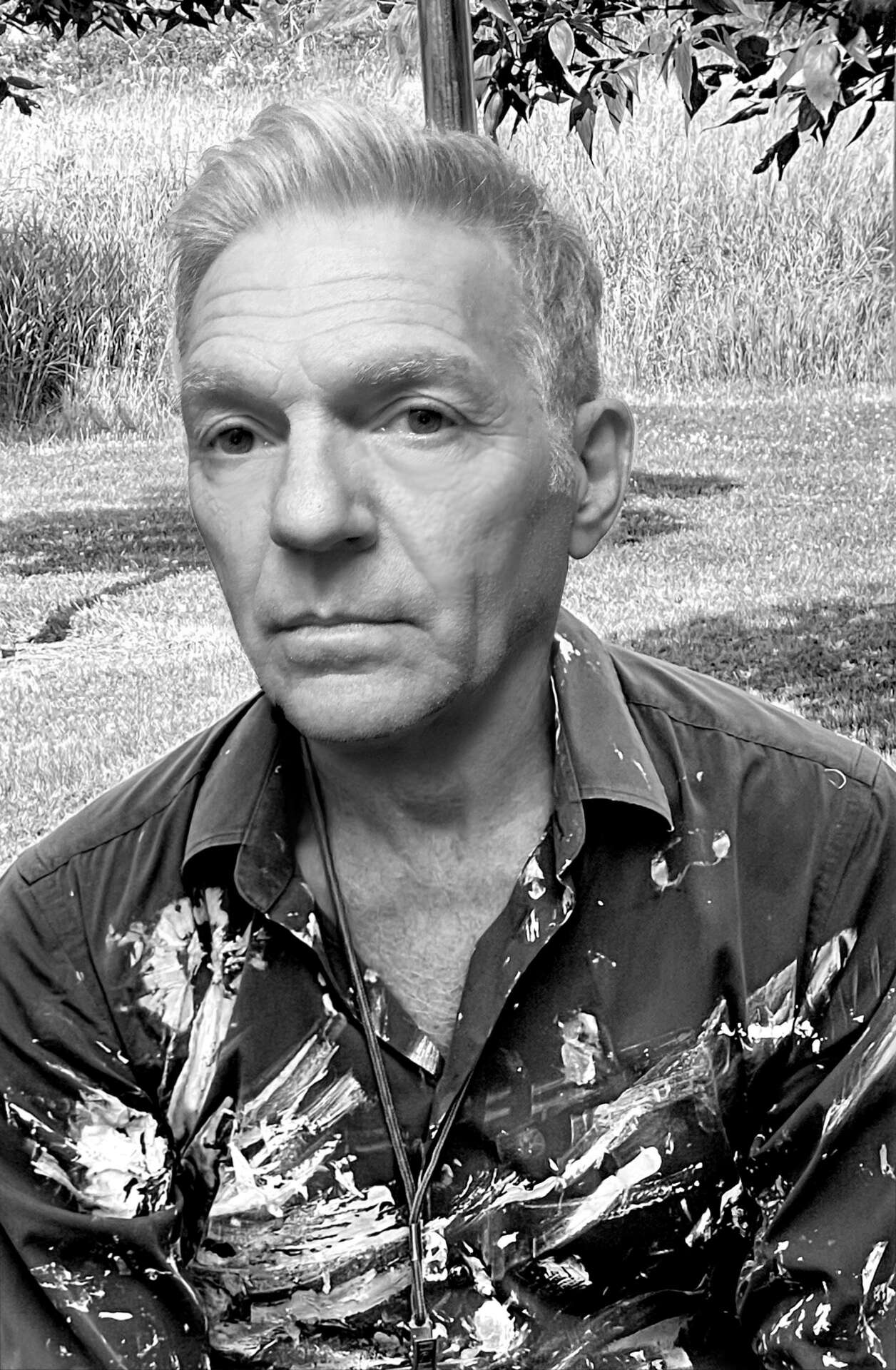We recently connected with Adam Cohen and have shared our conversation below.
Adam, thanks for joining us, excited to have you contributing your stories and insights. Earning a full time living from one’s creative career can be incredibly difficult. Have you been able to do so and if so, can you share some of the key parts of your journey and any important advice or lessons that might help creatives who haven’t been able to yet? But first, tell us a little about yourself.
I’m an international abstract painter. I was drawn to the arts at a very young age. I started studying at a local community art center at 12 years old. I was so fortunate to have had such a dynamic teacher Lilli Marzell. You could not find a more progressive person. She taught children up to 15yrs old. And taught art classes at the NJ state penitentiary. She would show us the images created by the inmates. Pointing out how powerful and full of raw emotion were they. In addition she would quote her revered Yoga teacher Paramahansa Yogananda. Inspiring us with with ideals of joy, calmness meditation and concentration. Helping us focus to work. Where do you find that kind of teacher today? She wholeheartedly encouraged me to continue an art education. And so I did. I went to Tyler School of Art. Part of Temple University in Philadelphia. Most of my professors in fine art were successful artists exhibiting work in NYC and elsewhere. Some had work in NYC museum collections. Being in their inspiring company gave me some idea of how this could play out for me. Or so I hoped. When I moved to NYC I turned to illustration out of some interest and necessity to survive. It was at the very dawn of computer arts. I became involved and was one of the first ten or so artists in the United States using the computer as an art making tool. This was 1989. In that time there was nobody doing this. There were no examples to follow. Nobody’s work to live up to. Adobe programmers would call us. They wanted to see how we could use the program as artists. Photoshop was initially created for industry photographers. They were expanding the software and needed to know about painting tools to be added in the program. It was very grass roots. And that made it exciting to be a part of. Through my experiments with photoshop I invented a compelling way of illustrating that launched me into a successful commercial arts career. Illustrating for industry giants; coca-cola, American Express, Pfizer Co, USPS, CBS and NY Times. I was featured a couple times in Adobe Photoshop early catalogs. As an illustrator I did not create art for myself. I had to help my clients achieve their visual goals. I would need to have a clear understanding of the use of the artwork. And find a creative attractive interpretation for their specific projects. I never imagined I’d be a successful illustrator. I always wanted to be a painter. And I missed painting over that 10 year period. Eventually I tired of deadlines and commercial work and returned to being a painter. Being a fine artist is completely different from being an Illustrator. I have complete control and freedom of expression in fine arts. I’m not painting for a client. Yet I am very grateful for the years as an illustrator. I got to exercise the business side of art making. Most painters get this much later. In the communication arts I ran every aspect of an art business. Every project needed a contract. The terms needed to be negotiated as well as usage, deadlines, kill fees and price. And so on…. That is where I learned to do this.
To conclude here’s a little more about the business side of fine art. It’s a simple affair If you have gallery representation. I don’t run that side of my business. My galleries do this. That frees my time to simply produce the work and ship it to a gallery and let them do the rest for their 50% commission. But there’s more to it than that. I often guide the art dealers in the selection of my work. I base it on what successfully sold to gallery collectors. When my art prices change it needs to be consistent with every gallery representing me worldwide. I have to deal with all the shipping complexities. There are very unique customs circumstances shipping to Italy, Amsterdam, Canada or Tokyo. And elsewhere. And that can be daunting. and very expensive. In addition, I do all my own accounting. I have studio space I rent. The organization of the studio needs constant maintenance and organization. As painting is a very messy business! I have to keep track of every painting. Where they went. When they were sold. I have to title each piece. That can be a bit challenging. All these activities can escalate when preparing for multiple exhibits or art festivals.


As always, we appreciate you sharing your insights and we’ve got a few more questions for you. Can you share a story from your journey that illustrates your resilience?
I developed resilience in art making when first a commercial artist. How do you make successful art under a deadline? I could not hand in a bad illustration. It had to be great or be rejected. I recall a teacher in college stressing the importance and necessity to understand what makes a painting work. What makes a good piece of art. How is it possible to create when you don’t feel inspired or particularly creative. Obviously It’s easier to create a great piece of art during times of powerful creative inspiration. But what about times when that’s absent. My college teachers did not accept the notion of writers block. And I started to try and apply some practical exercises. Running a creative business it’s absolutely necessary to know this to survive. No one is going to do my paintings for me. I started to learn by critiquing the work. And my early college critiques were quite helpful. It cannot just look good to me. If everyone else is not believing it that’s a big problem. To this day I deconstruct each completed painting. Try to understand exactly what made it work. And I’ve turned many a failed paintings into a successful one by painstakingly reworking them. Painting is always challenging. Each new piece you’re up against an empty canvas. You must jump in and try to be as uninhibited as possible. No holding back. Picasso said it took him a lifetime to learn to create as free as a child again. Or Jackson Pollock said he can never kill a painting. He can breath new life into a painting that had failed. Working the pieces over and over again creates resilience.


What’s the most rewarding aspect of being a creative in your experience?
What’s a successful creative business. I’m not sure. One can be very productive. But it’s not manufactured outside oneself. It’s too close to ones center. There’s some level of originality that must set your work apart from everyone else. This vision of self expression cannot be forced. It comes in its own time. I was 50 years old when I started abstract painting. Perhaps art is the language of the soul. But in it’s infinite wisdom that language still has to be developed. There’s an exquisite sensitivity I sometime feel while creating. Like conscious dreaming. Thats where new ideas come. And growth. Color and composition are so subtle. Difficult capture with any level of complete control. That’s why I like abstract painting. I can create accidents. And then I can edit in or out what I like. Use them as a springboard. A place to build the rest of the painting around. I create paintings that feel deeply personal to me. Somehow I always know when they are done. And they feel deeply personal to the collectors that buy them. Or the art dealers that represent my work. In that I am grateful. It’s not always that way in the fine arts. Not at all. The most rewarding part will always be the same. It’s when I’m pleased by any level of excellence I may see the work. Perhaps when it’s gone beyond what I thought my capabilities are. I also get a thrill out of the drive that is in me. There’s this powerful pull and struggle to express myself. Like a writer, film maker or musician. There’s the powerful need to have a vehicle to express through.
Contact Info:
- Website: adamcohenstudio.com
- Instagram: https://www.instagram.com/adamcohenstudio/
Image Credits
Adam Cohen Studio


